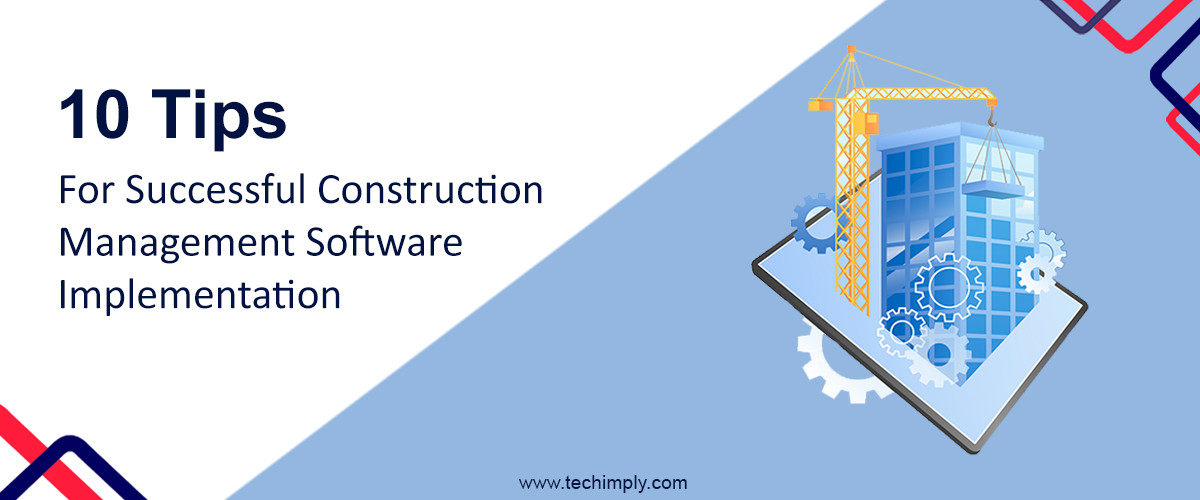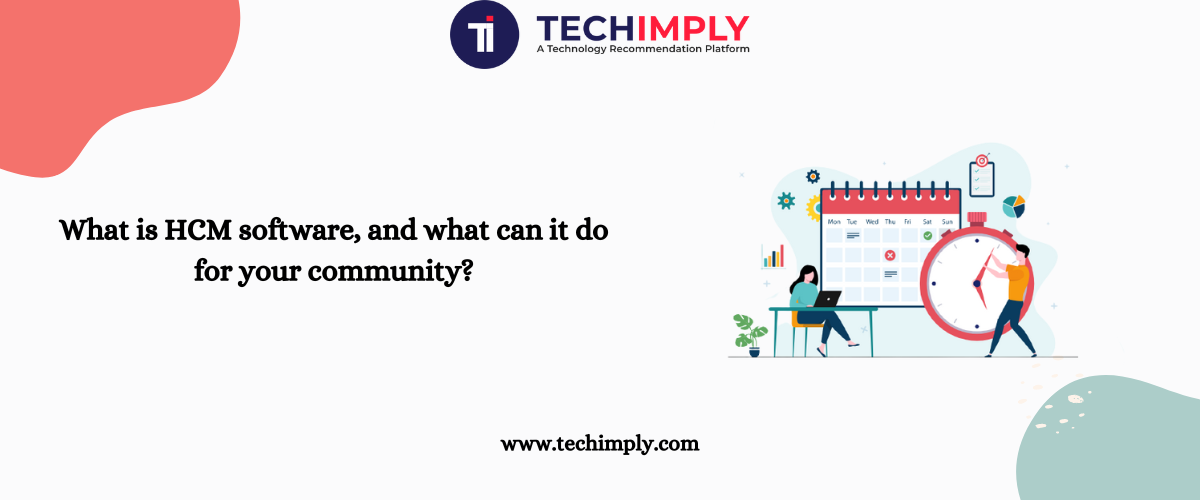As more contractors in the heavy Construction software industry discard traditional spreadsheet and paper-based workflow in favour of software solutions for estimating and operational management, it's becoming apparent that a common technology adage holds true: even the best software can fall short when poorly implemented. Whether it's for estimating, scheduling, tracking field activities, or maintaining equipment, the secret to successful software deployment lies in a well-conceived and efficiently executed roll-out plan. This enhances employee Construction management software adoption throughout the organisation, expedites the realisation of planned benefits and ROI targets, and positions the company for sustained success. Here are ten steps contractors could consider.
What is Construction Management Software?
Construction Management Software is a type of project management tool specifically designed for the construction industry. It provides construction professionals with a comprehensive system to manage, coordinate, and supervise projects from initiation to completion. The software typically includes capabilities such as task scheduling, budget tracking, quality management, and document control. This enables construction firms to streamline their operations, increase productivity, enhance communication, and minimize project risks, leading to timely and cost-effective project completion.
1. Simplifying The Management Process
Every construction management software primarily aims to revolutionise the management process by providing a structured approach. Consequently, these software tools empower team members by facilitating the timely and budget-conscious completion of projects. Essential tasks such as generating official Requests For Information (RFI), transmittals, and submissions can be accomplished using this technology. Furthermore, it simplifies the process of disseminating vital data and project budgets among important team members, all of whom can monitor these parameters concurrently.
2. Appoint a Product Owner
The success of a Construction Management Software implementation greatly depends on the designation of a competent product owner. This individual should not only understand the software but must also comprehend the business and the needs of various roles within the company. Consider a person who can efficiently mediate between the software provider and the internal team, addressing queries and resolving issues. Many times, numerous people are involved in deciding the usage of the new tool, this can lead to delays due to diversified opinions. Hence, it is vital to form a manageable project team, maintaining an equilibrium between actual requirements and supplementary ideas. A proficient product owner should be able to navigate these challenges seamlessly.
3. Consolidating and Retrieving Data:
Project management data is conveniently housed in a single location, simplifying the process of locating necessary information. Detailed audit logs, recording the time and date of document creation and adjustments, enable easy tracking and helps mitigate document loss. This setup provides all project participants instant access to crucial data whenever required.
4. Risk Evaluation in Construction Projects
The potential for early detection and mitigation of risks is greatly enhanced by construction management software, which provides an organised repository for critical project documentation. This software's ability to quickly access crucial documents such as Real Estate Agency Software contracts, change orders, and budgetary reports is central to maintaining cost control. Consequently, this minimises project expenditures and prevents errors that could drive up costs. Therefore, businesses can benefit from reduced operational costs and enhanced financial clarity, contributing to an overall boost in profitability.
5. Identify Core Needs and Segment Implementation Process
Often, people assume that complex and costly software is superior. However, in reality, the implementation of such software can be risky and time-consuming, and it's disappointing when numerous features remain unused. So, while implementing software in a multifaceted construction management software business, prioritise the critical needs/functions of your company. Implement these primary functions 3D architecture software first, following the principles of Agile methodology. You might consider implementing several different software solutions that cater precisely to your current needs. Remember the 80/20 rule: 20% of the system will produce 80% of the results. Implement your new tool in segments to avoid extensive failures.
6. Construct a Realistic Implementation Timeline
Once the software is acquired, creating an implementation timeline is crucial. Develop a roadmap that takes into consideration the bottlenecks the software needs to address. Construction project management plays a critical role at this stage. Most software implementation failures in construction management software are due to hasty rollouts. It's essential not to underestimate the time your staff would need for effective training to ensure a smooth implementation. Avoid software failure by planning a comprehensive, Real Estate CMA Software Timeline for the implementation process.
7. Invest in Onboarding
Show me the quality of your onboarding and I can tell you how successful the implementation of your new digital solution will be. Before you seal the deal with a software provider, you should always look into the level of onboarding and training they are able to offer.Implementing a new tool in your organisation can add a lot of confusion to your teams. For that reason you want to ensure that your team has at the first steps all the expert help they need in order to kickstart this new digital era on the right foot. Of course, onboarding and training don’t end here. It is important that your software provider Real Estate CRM Software is ready to help every time there is a new feature launched or there is an unforeseen problem during the construction management software.
This additional safety net in terms of guidance and customer service can make a big difference when it comes to the successful implementation of a new tool in your organisation.
8. Education and Training Initiatives
To ensure optimal feedback and cooperation from end-users, it is critical to provide thorough training on the construction management software usage. A well-rounded training program will facilitate a smooth transition for your organisation and staff from manual processes to a digital workflow. This training will minimise any inconvenience for the end-users, enabling them to utilise the full potential of the software through competent usage and operation. Education and training initiatives will also reduce disruptions arising from errors and inexperienced usage.Simply distributing complex and technical documentation to your personnel is not sufficient. A more supportive and engaging approach is necessary to foster motivation during this transitional period. Consider organising seminars and training sessions led by experts proficient in the software you're implementing. Alongside explaining the software's key features, emphasise the benefits that end-users will gain. Encourage interactive sessions and demonstrations to expedite the learning curve for your staff.
9. Informed and a Strong Communicator
As a construction management software, effective decision-making and communication are essential skills. Each decision you make carries weight and potential consequences, which could range from financial losses to endangerment of life. Therefore, it's crucial to carefully consider each choice before moving forward. However, this doesn't mean you should be hesitant to make decisions, as indecisiveness can sometimes lead to even more detrimental outcomes. Always take into consideration all available information and explore alternative options before deciding. Beyond decision-making, you must be a proficient communicator. Your role will bring you into contact with individuals from diverse cultural, educational, and economic backgrounds, and your ability to adapt to each unique circumstance is key. Remember, effective communication is not just about delivering your thoughts and decisions, but also about providing constructive feedback when tasks fall short of standards, and acknowledging exemplary performance when it is due.
10. Execute Synchronous Process Modifications
The addition of software into a construction company's operations shouldn't necessitate a complete revamp of its foundational logic and procedures. However, contractors who merely incorporate software without modifying their standard practices may overlook potential enhancements. For instance, the software could enable a company to standardise the structure and completion of estimates or field logs by different employees, or across various divisions and locations. The software implementation stage offers a prime opportunity to assess how tasks were previously carried out, remove inefficient or ineffective steps, and maintain best practices to leverage the precision, efficiency, and consistency benefits of a more streamlined process. Similarly, companies transitioning from paper timecards or spreadsheets to digital field logs often discover they can directly transfer this data to their payroll and accounting systems, bypassing civil engineering redundant data entry stages. This enables them to modify their procedures and reassign payroll clerks to more valuable tasks. Furthermore, a company equipped with specialised software for equipment maintenance management might reconsider how it schedules and deploys mechanics, shifting from reactive repairs to more proactive, preventative work.
Conclusion
Efficient utilisation of construction management software can result in substantial savings of both time and money. By adhering to the guidelines provided earlier, you can simplify operations and boost efficiency in your construction projects. Certain advanced management practices involve the use of specialised software tools to streamline procedures. For projects leveraging BIM, Techimply is a highly recommended choice. Techimply stands out as a robust construction management software and collaboration utility, enabling real-time planning and task forecasting. Techimply offers features that facilitate task assignments to team members and track their progress through email notifications. Don't hesitate to give Techimply a try for free and experience the upgrades it brings to your Software and Construction management methodologies.






